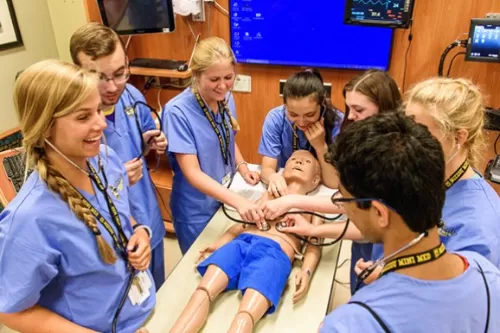A Complete Guide To Medical Programs For Students: Costs, Degrees, and Financial Aid
Pursuing a medical career is one of the most rewarding and challenging paths a student can take. Whether you're a local or international student, navigating the maze of medical programs, understanding the cost structures, choosing between different degree types, and securing financial aid can feel overwhelming. This guide breaks down the essentials you need to know to make informed decisions about your medical education.
Related searches

What Medical Programs Are Available for International Students?
International students have access to a wide range of medical programs in countries such as the United States, Canada, the United Kingdom, Australia, and many European nations. In the U.S., most medical schools do accept international applicants, though the competition is fierce and requirements can vary. Common pathways include:
MD (Doctor of Medicine) programs at allopathic medical schools
DO (Doctor of Osteopathic Medicine) programs, although fewer accept international students
Pre-med undergraduate programs, which are necessary before applying to medical school in the U.S.
Graduate entry medical programs in countries like the UK and Australia
Some programs may require you to complete prior coursework in the host country, and many have strict requirements regarding visas, English proficiency (like TOEFL or IELTS), and entrance exams such as the MCAT.
What Is the Difference Between MD and DO Programs?
In the United States, medical degrees come in two forms:
MD (Doctor of Medicine): This is the more traditional and widely recognized path. MDs follow an allopathic approach, which focuses on diagnosing and treating human diseases through standard medical practices like prescriptions and surgery.
DO (Doctor of Osteopathic Medicine): DOs receive similar training but also focus on a more holistic, preventive care model. They are trained in osteopathic manipulative treatment (OMT), a hands-on technique to diagnose and treat physical issues.
Both MDs and DOs are fully licensed physicians in the U.S. and can specialize in any medical field, but DOs are often more concentrated in primary care and family medicine.
How Much Does a Medical Program Cost?
Medical education is a significant financial investment. Here's a general breakdown:
In the U.S., the average total cost of medical school (including tuition, fees, and living expenses) is approximately $200,000 to $300,000 for a four-year program.
Private medical schools tend to be more expensive than public institutions, especially for international students.
In other countries, such as Germany or some Nordic nations, tuition can be significantly lower—even free—but language barriers and limited seats for non-EU students may be obstacles.
Don't forget additional costs such as exam fees, health insurance, textbooks, and residency applications.
What Scholarships or Financial Aid Are Available for Medical Programs?
While funding options for medical school are limited compared to undergraduate programs, there are still several pathways:
Government Loans & Grants (available mostly to citizens and permanent residents)
University-Based Scholarships: Many schools offer merit- or need-based awards. Some even have specific scholarships for international applicants.
Private Scholarships: Organizations like the American Medical Association, Howard Hughes Medical Institute, and International Medical Aid offer competitive awards.
Loan Forgiveness Programs: In exchange for working in underserved areas, some students qualify for partial or full loan forgiveness.
Assistantships or Work-Study: Though rare in medical school, some institutions offer part-time roles for financial support.
Conclusion
Understanding your options is the first step toward a successful medical education journey. Whether you're exploring programs as an international student, comparing MD and DO paths, budgeting for tuition, or looking for scholarships, thorough planning is essential. With the right information and resources, your dream of becoming a doctor can be both achievable and financially manageable.

